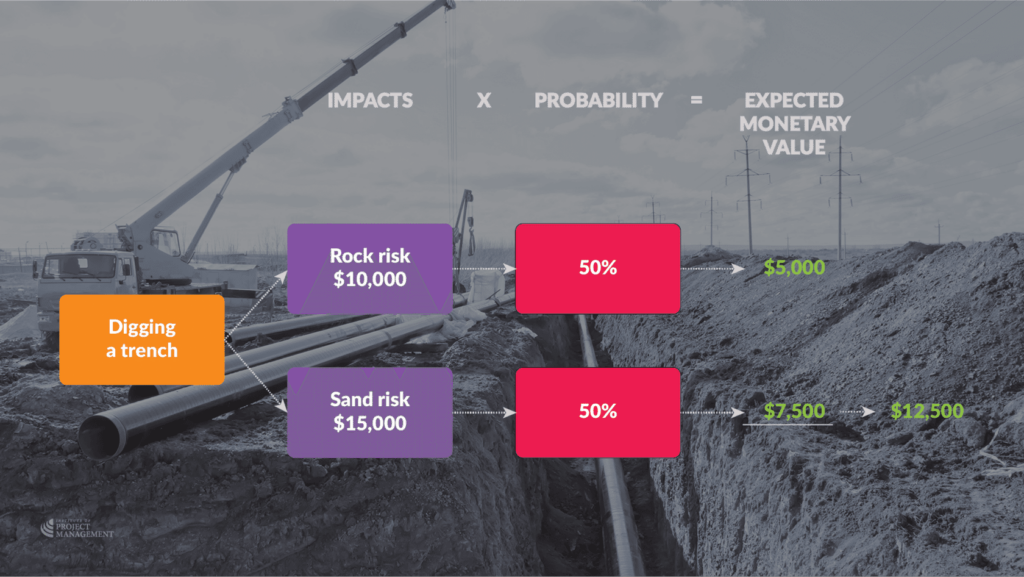7.10 Contingency planning
What is a contingency?
A contingency is a provision for an unforeseen event or circumstance.
In other words, you reserve ‘something’ in your project plan that can be accessed and used when a risk eventuates.
We can reserve three basic types of contingencies in projects, and (perhaps unsurprisingly) they can be traced back to the triple constraints.
- Tolerance in the specification (by that, we mean how much you are allowed to deviate from scope)
- Float in the schedule (which could be naturally occurring or artificially imposed through leads and lags), and
- Money in the budget.
Contingency v management reserves
An experienced project manager will allow reserves in the schedule and budget to account for uncertainty.
The reserve may be a percentage of the estimated costs (or time) or a fixed amount of the same.
You might also identify and reserve the right to drop things from scope if the project delivery doesn’t go according to plan.
There are two types of reserve:
Contingency reserve
The contingency reserve is an allocation of time or money to respond to the risks that were identified in the risk analysis process; Donald Rumsfeld might call these known unknowns.
Management reserve
The management reserve is the time and/or money set aside to meet the risks that were not identified or accepted as is; the unknown unknowns.
These two reserves are separated in order to have more control over how they are spent.
Let’s look at the use of contingency reserves through an example.
One project task is to dig a trench for a pipeline.
Now, we don’t know until we start digging whether we will hit sand or rock.
We do know that if we dig through sand, the task will cost $10,000; but if we have to dig through rock, it will cost $15,000.
There is a 50:50 chance that we will hit sand or rock – how much should we allow in our budget for this task?
Using contingency reserves
$15,000
If you said $15,000, that’s all well and good, but remember Parkinson’s Law?
If you only hit sand, there is a real risk that the project team will spend closer to $15,000 than $10,000 just because they can.
By allocating the full amount regardless of the circumstances, you are inviting (and potentially rewarding!) inefficiency.
$12,500
If you said $12,500: congratulations – you applied the expected monetary value technique!
I assume your rationale is that if there is a 50% chance we need an extra $5,000, we should allow the base amount plus $2,500 as a contingency.
Unfortunately, the reality is that if you only hit sand, you will have more money than you need for the task, and if you hit rock you won’t have enough.
From a practical standpoint, neither outcome is ideal.

$10,000
Best practice actually says we should budget $10,000 for the task and allow a $5,000 contingency reserve that is exclusively linked to the trigger event – hitting rock.
By having the contingency pre-approved in this way, the project manager is encouraged to work as efficiently as possible within a realistic budget, while at the same time retaining the flexibility to respond in real-time to foreseeable issues.
Contingency reserves should be clearly identified in the project plan at the WBS task level, and as more precise information about the task becomes available, the reserve may be used, reduced, or eliminated.
Properly applied, contingency reserves:
- Discourage project managers from padding estimates
- Motivate them to perform comprehensive risk analyses, and
- Give them the autonomy to respond to anticipated issues as they arise.
